
(L-R) George Harrison, Ringo Starr, John Lenon, and Paul Mccartney arriving at JFK airport in BEATLES 64′. Photo Courtesy of Apple Corps, Ltd. All Rights Reserved.
As we relive The Fab Four’s American debut, David Tedeschi and Margaret Bodde share how their songs healed a nation
The past decade has been a golden era for fans eager to experience The Beatles on screens both big and small. Standouts include Ron Howard’s The Beatles: Eight Days a Week – The Touring Years, Peter Jackson’s monumental Get Back documentary, alongside its companion piece Let It Be, and McCartney 3,2,1, an enthralling series where Sir Paul reflects on his songwriting in conversation with iconic producer Rick Rubin.
Now, the latest addition to this cinematic anthology, Beatles ’64, has arrived on Disney+. This feature-length documentary dives into The Beatles’ transformative first visit to America in February 1964, culminating in their landmark appearance on The Ed Sullivan Show, which mesmerized 73 million viewers and sparked a cultural revolution. Through a blend of rare footage captured by Albert and David Maysles and contemporary reflections from Paul, Ringo, fellow musicians, and devoted fans, the film vividly captures the impact the Fab Four had on a nation still mourning the assassination of JFK.
True to its subject, Beatles ’64 doesn’t just tell the story of the people involved – it celebrates the music. Restored concert and performance footage showcases John, Paul, George, and Ringo in all their early raw energy, armed with a setlist of electrifying rock ‘n’ roll hits and burgeoning original classics. This was the genesis of a career that would not only redefine popular music but help to shape modern culture.
In a conversation with director David Tedeschi and producer Margaret Bodde, we delve into how their songs propelled The Beatles’ meteoric rise…
The role of mischief in the Beatles’ songwriting
One of the first quotes that we hear on the documentary is writer Joe Queenan saying that when he heard She Loves You on the radio it was like the light came on. What was the moment when the Beatles turned the lights on for you?
David Tedeschi: “As a little kid, my sister had the Red Album and the Blue Album on vinyl, and I would sneak and play the albums behind her back, over and over again. And of course, vinyl was very fragile. I didn’t have permission to do it, but the music was so wonderful that I had to do it. She was very kind; our house was very small and she must have known what I was up to; she never banned me from them.”
Margaret Bodde: “For me, it was the White Album that my older brother had a copy of. Everything about the look of the album, the look of this band, and the music… Every track was its own sonic world. There was so much diversity of songwriting, of musical styles. You could tell that there were different people making different tracks, but it was a cohesive whole. It was immediately fascinating and I wanted more of that. So, it was fun to go and listen to the records that came before that, and then listen to the records that came after that, and start to get to know who these guys were.”
“AT THE END OF THE DAY, IT’S ALL ABOUT THE MUSIC”
Has your relationship with and love of the Beatles endured from those early moments right up to working on the documentary, or did you have to come back to them to make this project?
MB: “It’s a pretty constant thing for me.”
DT: “I would say it was a pretty constant thing. But working on No Direction Home [Martin Scorsese’s Bob Dylan documentary), and then working on Living In The Material World [Scorsese’s 2011 documentary about George Harrison]… I started to meditate when I was working on Living In The Material World. The music literally got inside of my head in a different way – it rewired my brain, because it really made me look at the world differently. I don’t know if that’s constant; it had a big impact on me later as well.”
In the documentary it was interesting to see a lot of those fans first reaction to the Beatles was from the radio, hearing them for the first time rather than when they saw them for the first time. Was it important to balance the personalities with the songwriting and musical talent?
DT: “It was important to include the music. At the end of the day, it’s all about the music. As you said, Joe Queenan… when he says, talking about the gloom following the Kennedy assassination; he hears She Loves You and the light comes on. All of a sudden, it did something to him, immediately. He had this visceral reaction and that’s one of the reasons we have the performance shot by the Maysles from Washington Coliseum of She Loves You.
“They didn’t shoot very much at the Washington Coliseum. So, the fact that we had that, you know… sometimes you get very lucky. It’s almost an act of God. That’s one of them. They shot, I think, two, maybe three songs. And there you have it.”

John Lenon in Disney’s BEATLES ’64. © 2024 Apple Corps, Ltd. All Rights Reserved.
And what was it about those early songs that had such a profound effect?
MB: “I think it’s the joy in the songs. It’s kind of a simple idea, but they’re very joyful, inherently, musically and lyrically. They’re singing about love and they’re singing about happy things. Their later songs explored much more complex philosophies and, maybe, darker themes, but generally speaking, they took American rhythm and blues, rock and roll, pop… and created their own thing that also had an English heritage; they made something new that sounded immediately accessible and immediately appealing. It’s hard to really analyse, but it seemed joyful, and especially, like David said, coming on the heels of such a tragic event in our country’s history, it was very much needed and welcomed by people.”
DT: “I love that you say that the music is almost imbued with this pure joy. One of the things that was remarkable to us from the very beginning is how these young women, more than anybody else – there were young men who were also fans – but how these young women heard something, were almost ridiculed for their fandom, and yet they heard something no one else heard, and everybody had to catch up with them. Two or three years later, everybody, male and female, of a certain age was listening to The Beatles.
“Jane Tompkins, it’s not in the film, but she talked about how the Beatles sang about love, and Paul talks about it. I Want To Hold Your Hand, She Loves You… sometimes it was romantic love, but it wasn’t the same as other pop music. It’s not that long after that Paul McCartney will write something like Eleanor Rigby. It’s a different kind of love, a deeper love. I don’t mean to categorise it like, ‘This is deep. That’s not deep.’ I just mean, the love that they sing about somehow brings out our humanity.”
We know they wanted to write songs and be in a band so that they didn’t have to work a proper job and to help them pick up girls. It’s amazing that from that ambition grew something that was able to heal a grieving nation…
MB: “I think it could have been all of those things. I think you can be not wanting to work a job, and to pick up girls, and write songs about… write poems. Their lyrics are very poetic. I think you can do all those things, especially when you’re 19, 20, and 22 years old and you’re a musical genius, right? All those things can be true.”
“THEY MADE SOMETHING NEW THAT SOUNDED IMMEDIATELY ACCESSIBLE AND IMMEDIATELY APPEALING”
And do you think they had to have the personalities that came with it for them to make such an impact, the songs couldn’t have done it by themselves?
MB: “Well, it certainly helped. When they had hits on the radio, you didn’t know who was making that music. But then, when they show up, they’re so winning, and so funny, and so authentic… They’re very authentically themselves. They weren’t putting on a character. They were themselves, and at that time, they were really more of a unit and weren’t yet identifiable in all of their very distinctive personalities. Your favourite Beatle could be any one of them, and it could change, because they all seemed very similar.
“I think all of those aspects about their sameness with each other, and their differences, really helped their appeal with young people. They weren’t Elvis Presley, they weren’t Frank Sinatra, they weren’t one person, they were four.”
DT: “But it’s also really interesting, I had forgotten how much in this period were covers. You know, that performance of [The Miracles’] You Really Got A Hold On Me, and Smokey [Robinson] talking about, as a songwriter, what that meant to him; that was surprising and really beautiful. The same with Smokey’s performance of Yesterday and his appreciation of their songwriting. Again, Yesterday, it’s a pop song, it’s on the radio and it’s being made by a pop group, but it’s a beautiful song, and it’s an unusual song. How old were they when it was written? It’s remarkable.
“There’s something in the film about the nature of interplay between artists… Motown and R&B. I also loved the way Smokey described seeing The Beatles at The Cavern: ‘It was music that was familiar to me, but it sounded like the Beatles would play it.’ I thought that was a very direct way to say it. In a way, they learned this language, and then they started to write these songs with the language that they had learned.”

Paul Mccartney in Disney’s BEATLES ’64. © 2024 Apple Corps, Ltd. All Rights Reserved.
You have the likes of Smokey, Ron Isley, and Ronnie Spector in the documentary and they’re giving The Beatles their patronage. Rather than any idea of cultural appropriation they were really proud that The Beatles had taken their songs to a different audience…
MB: “It was such a vocal thing that the Beatles were talking about. They talked a lot about all their musical heroes. We have, in the film, a radio interview where they’re talking about how they’re hoping that The Miracles come to town, and that the Isleys are here, and it’s just great. And they’re with Spector and The Ronettes. Their coming here, it’s almost a pilgrimage. This is the source of their inspiration. Little Richard… they just revere this music.
“I don’t know, when someone is coming from England and talking so openly about their love of Motown and Stax… They just know the music better than Americans. I think that’s why it doesn’t come off as what we now call cultural appropriation. I don’t know that other white artists were so upfront about the fact that these songs had been written by blues artists or R&B artists, and they made them their own. But the Beatles were definitely in a homage spirit.”
“THE LOVE THAT THEY SING ABOUT SOMEHOW BRINGS OUT OUR HUMANITY”
Did you see anything of the special creative bond between John and Paul on screen, or anything about their relationship that you hadn’t seen before?
MB: “I don’t know, it’s tough. When David interviews Paul at the Brooklyn Museum, there’s that great photo that Paul’s brother took of them at Paul’s house. You see Paul and John, writing songs. In that photograph, their hands are in motion, and you have this sense of the songwriting pouring out of them. Somehow, separately but together, they must have been in such musical sync at that time. Maybe it’s a lot of shared influences, but it’s quite mysterious. I don’t know that I would have any insight into what each brought to that equation.”
DT: “It’s sort of fascinating. We know that later on, John Lennon and Paul McCartney would sit down and write their own songs and share the publishing. Here, they were writing songs together. And when Paul is looking at the lyrics of I Want To Hold Your Hand… When I saw those lyrics before I was with Paul looking at those lyrics, to me, it was a very emotional thing. It’s like a religious relic, or something, like, ‘My God, this exists! This is where he scratched out those words.’ It was just something to ponder in the end, that they wrote together, and then, as I understand it, they wrote separately.”
What was it like chatting with Paul and Ringo, do they still get the tingles about this stuff as much as we all do?
MB: “Maybe a different kind of tingles, ‘Oh, this again.’ They’re different guys. Paul, we were very lucky, because he had put his book together, Eyes Of The Storm, of all the photographs that he took from 1964 and so this was quite fresh for him. And obviously the photographs themselves and the other materials from his archive, like the lyrics and other memorabilia, it brings all those memories flooding back, including memories of his fallen brothers, so it was very emotional, and it was very present for him.
“With Ringo, we wanted to create a similar type of not just sitting-down-and-talking situation. We were fortunate that Ringo is a self-professed hoarder. He had all his costumes, his outfits. When David has him look at the photograph of the drum roster where he’s got a little tiny strip of wood holding his drum stool on there, I don’t know that Ringo had really looked at that before. To be able to trigger memories based on the fact that they were so well documented was a real asset for the film.”
DT: “George is such a wonderful guitar player and Ringo, just in Long Tall Sally, I can’t take my eyes off of him. I mean, what a great drummer! That’s got to inform the songwriting in some way. And the bass in Long Tall Sally. They were all so close. Of course, Mick Jagger always called them the “four-headed beast.” They’re so in each other’s lives, they must have been writing based on each of their talents – I don’t mean as writers, I mean as performers, to a degree.”
If you both were with Albert and David Maysles for those 14 days, what one question would you have asked the Beatles?
MB: “I would ask, ‘Can we keep filming you? Can we go back to England with you and follow you around?’ Because that’s what I would like to see, more of them and their authentic selves.”
Lastly, what is it that you hope the people viewing the documentary take away from it?
MB: “Personally, I really enjoyed rediscovering the early songs – the covers and their own compositions. It’s something that I hadn’t listened to in a while, and I hadn’t remembered how much I loved that early work and how energetic and fresh it still feels. To rediscover the music, to be able to hear for the first time what a great live band they were in 1964, thanks to the restoration of the audio and the picture, giving you the sense that you’re actually there. It feels very present and fresh, hopefully to younger audiences too who are discovering the Beatles and seeing film of them at that age for the first time.”
DT: “Part of me would want to say, you know, ‘The wondrous power of music to get inside of us and the joy of music.’ But part of me also, to sort of paraphrase Paul McCartney when he’s asked ‘What is the contribution of Western culture?’ I would respond, ‘It’s a good time, a good laugh, and a lot of fun.”



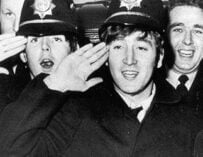

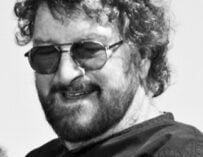
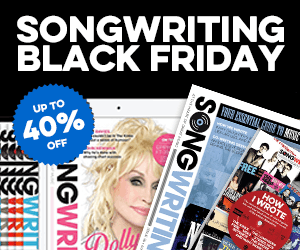

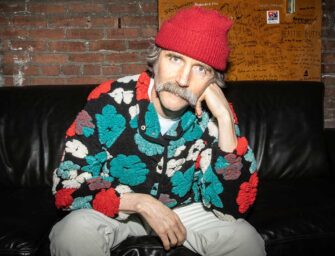

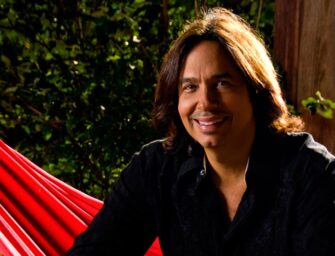
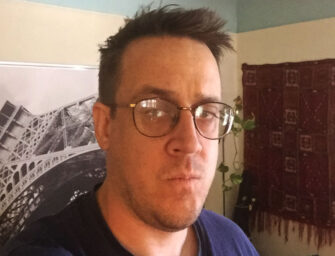

















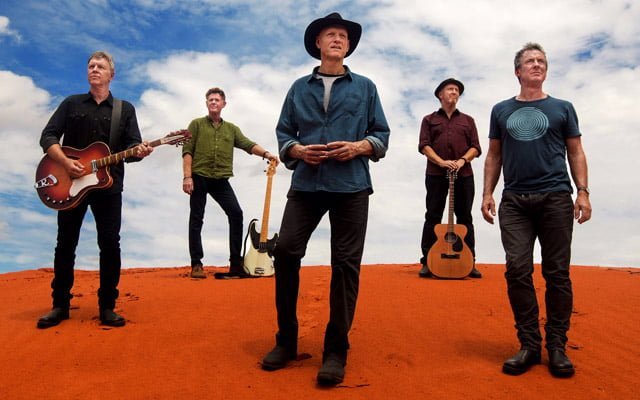





Related Articles